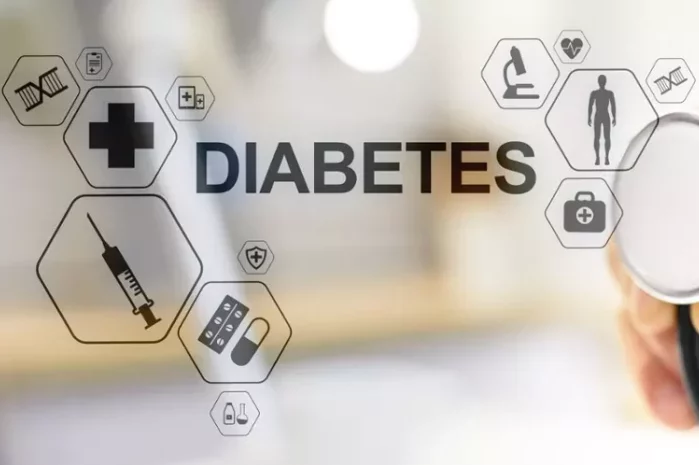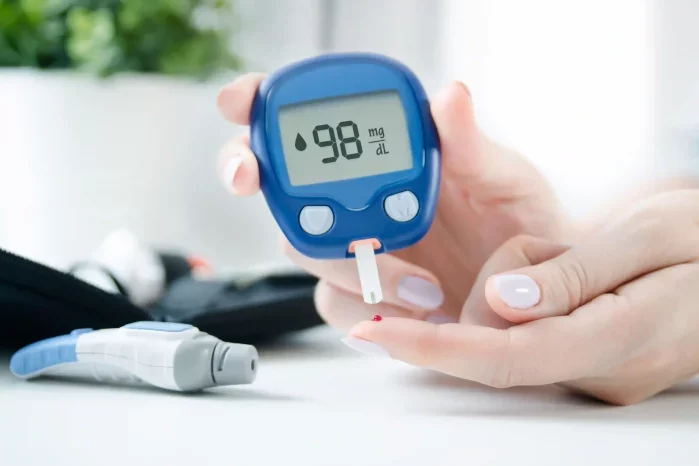Insulin resistance is a complex and widespread condition that significantly impacts metabolic health. It is characterized by the body’s reduced ability to respond to the hormone insulin, which plays a crucial role in regulating blood glucose levels. Over time, this resistance can lead to a cascade of health issues, affecting various organs and systems within the body. This article aims to delve into the causes, mechanisms, and wide-ranging consequences of insulin resistance, providing a comprehensive understanding of its impact on overall health.
Understanding Insulin Resistance
To fully appreciate the consequences of insulin resistance, it is essential to understand its basic mechanisms. Insulin is a hormone produced by the pancreas that facilitates the uptake of glucose from the bloodstream into the cells, where it is used for energy. In individuals with insulin resistance, cells in muscles, fat, and the liver do not respond effectively to insulin, resulting in elevated blood glucose levels.
Mechanisms of Insulin Resistance
Several mechanisms contribute to the development of insulin resistance, including:
Genetic Factors: Genetic predisposition plays a significant role, with certain gene variations affecting insulin signaling pathways.
Obesity: Excess body fat, particularly visceral fat, releases pro-inflammatory cytokines and free fatty acids, which interfere with insulin signaling.
Sedentary Lifestyle: Lack of physical activity reduces the efficiency of glucose uptake by muscles, contributing to insulin resistance.
Diet: Diets high in refined carbohydrates, sugars, and unhealthy fats can lead to metabolic disturbances that promote insulin resistance.
Hormonal Imbalances: Conditions such as polycystic ovary syndrome (PCOS) and Cushing’s syndrome can disrupt normal insulin function.
Metabolic Syndrome
One of the most significant consequences of insulin resistance is the development of metabolic syndrome, a cluster of conditions that increase the risk of cardiovascular disease, type 2 diabetes, and other serious health issues. Metabolic syndrome is diagnosed when an individual has at least three of the following conditions:
Abdominal Obesity: Excess fat around the waist, with waist circumference thresholds typically set at >40 inches for men and >35 inches for women.
Elevated Triglycerides: Blood triglyceride levels ≥150 mg/dL.
Low HDL Cholesterol: High-density lipoprotein (HDL) cholesterol <40 mg/dL in men and <50 mg/dL in women.
High Blood Pressure: Blood pressure ≥130/85 mmHg.
Elevated Fasting Glucose: Fasting blood glucose levels ≥100 mg/dL.
Health Implications of Metabolic Syndrome
Metabolic syndrome significantly increases the risk of several serious health conditions, including:
Cardiovascular Disease: Insulin resistance and associated dyslipidemia (high triglycerides and low HDL cholesterol) contribute to atherosclerosis, increasing the risk of heart attack and stroke.
Type 2 Diabetes: Persistent insulin resistance often leads to the development of type 2 diabetes, as the pancreas becomes unable to compensate with sufficient insulin production.
Non-Alcoholic Fatty Liver Disease (NAFLD): Insulin resistance is closely linked to NAFLD, where excess fat accumulates in the liver, potentially leading to inflammation and cirrhosis.
Type 2 Diabetes
Insulin resistance is a primary factor in the development of type 2 diabetes, a condition characterized by chronic hyperglycemia due to impaired insulin secretion and action. Over time, the pancreas may become unable to produce sufficient insulin to overcome the resistance, leading to elevated blood glucose levels.
Complications of Type 2 Diabetes
Type 2 diabetes is associated with numerous complications, many of which are exacerbated by underlying insulin resistance:
Cardiovascular Complications: Individuals with type 2 diabetes are at significantly higher risk of heart disease, stroke, and peripheral artery disease.
Neuropathy: Chronic high blood glucose levels can damage nerves, leading to peripheral neuropathy, which causes pain, tingling, and loss of sensation, particularly in the extremities.
Nephropathy: Diabetes is a leading cause of chronic kidney disease (CKD) and end-stage renal disease (ESRD), necessitating dialysis or kidney transplantation.
Retinopathy: Diabetic retinopathy, resulting from damage to the blood vessels in the retina, can lead to blindness if not properly managed.
Infections: People with diabetes are more susceptible to infections due to impaired immune function and poor circulation.
Cardiovascular Disease
Insulin resistance significantly contributes to the development and progression of cardiovascular disease (CVD). The interplay between insulin resistance, inflammation, and dyslipidemia creates an environment conducive to atherosclerosis, a condition characterized by the buildup of plaques in the arterial walls.
Pathophysiology of Atherosclerosis
Atherosclerosis begins with endothelial dysfunction, a condition where the inner lining of blood vessels does not function properly. Insulin resistance exacerbates endothelial dysfunction through:
Inflammation: Chronic low-grade inflammation associated with insulin resistance damages the endothelium and promotes plaque formation.
Dyslipidemia: Insulin resistance often leads to an atherogenic lipid profile, with elevated triglycerides, small dense LDL particles, and low HDL cholesterol.
Hypertension: Insulin resistance is linked to increased blood pressure, further damaging the vascular endothelium.
Cardiovascular Events
The progression of atherosclerosis can lead to various cardiovascular events, including:
Coronary Artery Disease (CAD): Narrowing of the coronary arteries reduces blood flow to the heart, leading to angina (chest pain) and myocardial infarction (heart attack).
Stroke: Plaque buildup in the carotid arteries can restrict blood flow to the brain, resulting in an ischemic stroke.
Peripheral Artery Disease (PAD): Reduced blood flow to the limbs can cause claudication (pain during walking) and, in severe cases, lead to tissue death and amputation.
Non-Alcoholic Fatty Liver Disease (NAFLD)
Non-alcoholic fatty liver disease is a condition where excess fat accumulates in the liver cells, and it is strongly associated with insulin resistance. NAFLD encompasses a spectrum of liver conditions, ranging from simple steatosis (fat accumulation) to non-alcoholic steatohepatitis (NASH), which includes inflammation and fibrosis.
Progression to NASH and Liver Cirrhosis
While simple steatosis is relatively benign, NASH can progress to liver fibrosis and eventually cirrhosis, characterized by severe scarring and impaired liver function. Insulin resistance contributes to this progression through:
Lipotoxicity: Accumulation of toxic lipid metabolites in liver cells induces inflammation and cell damage.
Oxidative Stress: Increased fat oxidation in the liver produces reactive oxygen species (ROS), further damaging liver cells.
Inflammatory Cytokines: Insulin resistance is associated with elevated levels of pro-inflammatory cytokines, exacerbating liver inflammation and fibrosis.
Complications of NAFLD
Advanced NAFLD and NASH can lead to several serious complications, including:
Liver Cirrhosis: Severe scarring of the liver impairs its function, leading to liver failure and requiring liver transplantation.
Hepatocellular Carcinoma (HCC): Chronic liver inflammation and fibrosis increase the risk of liver cancer.
Cardiovascular Disease: NAFLD is an independent risk factor for cardiovascular disease, with many individuals with NAFLD dying from CVD-related causes rather than liver disease itself.
Polycystic Ovary Syndrome (PCOS)
Polycystic ovary syndrome is a common endocrine disorder among women of reproductive age, characterized by irregular menstrual cycles, hyperandrogenism (excess male hormones), and polycystic ovaries. Insulin resistance is a central feature of PCOS and contributes to its pathophysiology and associated complications.
Pathophysiology of PCOS
The relationship between insulin resistance and PCOS involves several mechanisms:
Hyperinsulinemia: Elevated insulin levels due to insulin resistance stimulate ovarian androgen production, leading to symptoms such as hirsutism (excess hair growth) and acne.
Ovulatory Dysfunction: Insulin resistance disrupts normal ovarian function, leading to irregular or absent ovulation and menstrual irregularities.
Inflammation: Chronic low-grade inflammation associated with insulin resistance exacerbates ovarian dysfunction and metabolic disturbances.
Complications of PCOS
Women with PCOS and insulin resistance face an increased risk of several health issues:
Infertility: Ovulatory dysfunction often leads to difficulties in conceiving.
Gestational Diabetes: Women with PCOS are at higher risk of developing gestational diabetes during pregnancy.
Type 2 Diabetes: Insulin resistance significantly increases the risk of developing type 2 diabetes later in life.
Cardiovascular Disease: PCOS is associated with an increased risk of cardiovascular disease, partly due to insulin resistance and associated metabolic abnormalities.
Hypertension
Insulin resistance is closely linked to hypertension (high blood pressure), a major risk factor for cardiovascular disease, stroke, and kidney disease. The mechanisms through which insulin resistance contributes to hypertension include:
Sympathetic Nervous System Activation: Insulin resistance stimulates the sympathetic nervous system, leading to increased heart rate and vasoconstriction (narrowing of blood vessels).
Sodium Retention: Insulin resistance promotes sodium retention by the kidneys, increasing blood volume and pressure.
Endothelial Dysfunction: Impaired endothelial function reduces the production of nitric oxide, a vasodilator, leading to increased vascular resistance and blood pressure.
Health Implications of Hypertension
Hypertension resulting from insulin resistance can lead to several serious health conditions, including:
Cardiovascular Disease: Elevated blood pressure damages blood vessels and the heart, increasing the risk of heart attack, stroke, and heart failure.
Chronic Kidney Disease (CKD): High blood pressure damages the kidneys’ filtering units, leading to CKD and, in severe cases, end-stage renal disease.
Retinopathy: Hypertension can damage the blood vessels in the eyes, leading to vision problems and blindness.
Obesity
Obesity is both a cause and consequence of insulin resistance, creating a vicious cycle that exacerbates metabolic disturbances. Insulin resistance contributes to obesity through several mechanisms:
Hyperinsulinemia: Elevated insulin levels promote fat storage, particularly in visceral (abdominal) fat.
Leptin Resistance: Insulin resistance is associated with leptin resistance, a condition where the brain does not respond effectively to the satiety hormone leptin, leading to overeating.
Reduced Energy Expenditure: Insulin resistance can reduce basal metabolic rate (BMR), making it more challenging to lose weight.
Health Implications of Obesity
Obesity resulting from insulin resistance significantly increases the risk of several health conditions, including:
Type 2 Diabetes: Excess body fat exacerbates insulin resistance, increasing the risk of developing type 2 diabetes.
Cardiovascular Disease: Obesity contributes to hypertension, dyslipidemia, and atherosclerosis, increasing the risk of heart disease and stroke.
Non-Alcoholic Fatty Liver Disease (NAFLD): Obesity is a major risk factor for NAFLD and its progression to NASH and liver cirrhosis.
Osteoarthritis: Excess weight puts additional stress on joints, leading to osteoarthritis and joint pain.
Inflammatory and Immune System Dysfunction
Insulin resistance is associated with chronic low-grade inflammation, which plays a crucial role in the development and progression of many chronic diseases. The relationship between insulin resistance and inflammation involves:
Adipokines: Fat tissue releases pro-inflammatory adipokines, such as tumor necrosis factor-alpha (TNF-α) and interleukin-6 (IL-6), which contribute to insulin resistance and systemic inflammation.
Immune Cell Infiltration: Insulin resistance leads to the infiltration of immune cells, such as macrophages, into adipose tissue, further promoting inflammation.
Oxidative Stress: Insulin resistance increases the production of reactive oxygen species (ROS), which contribute to oxidative stress and inflammation.
Health Implications of Chronic Inflammation
Chronic inflammation resulting from insulin resistance can lead to several health conditions, including:
Atherosclerosis: Inflammation promotes the formation and progression of atherosclerotic plaques in blood vessels.
Type 2 Diabetes: Chronic inflammation exacerbates insulin resistance and impairs insulin secretion by the pancreas.
Cancer: Inflammation is a known risk factor for the development and progression of certain cancers, including liver, colon, and breast cancer.
See also: What to Eat When You Have Insulin Resistance
Conclusion
Insulin resistance is a multifaceted condition with far-reaching consequences for overall health. It plays a central role in the development of metabolic syndrome, type 2 diabetes, cardiovascular disease, non-alcoholic fatty liver disease, polycystic ovary syndrome, hypertension, obesity, and chronic inflammation. Understanding the mechanisms and impacts of insulin resistance is crucial for developing effective prevention and treatment strategies to mitigate its adverse health effects.
Addressing insulin resistance requires a comprehensive approach that includes lifestyle modifications, such as a healthy diet, regular physical activity, weight management, and, in some cases, pharmacological interventions. By tackling insulin resistance, we can reduce the burden of chronic diseases and improve the quality of life for millions of individuals worldwide.
Related topics:
How Does Insulin Resistance Cause Weight Gain

























